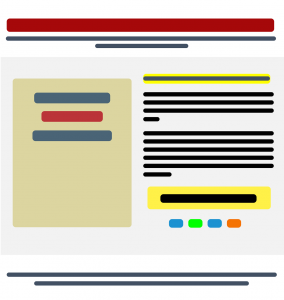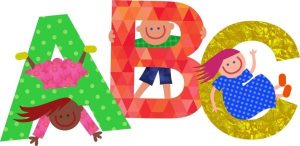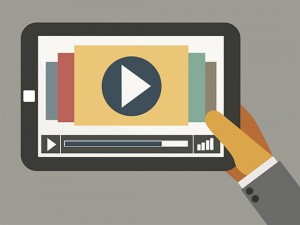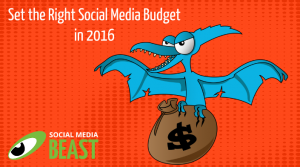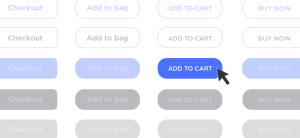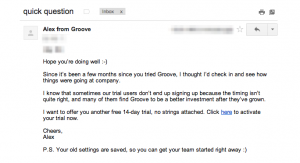Marketing collateral is traditionally associated with print products such as business cards, flyers, sales presentation materials, and the like. In today’s business world, though, marketing collateral includes both print and digital assets. Having the right mix of marketing materials from the outset will help your small business in the long run, as you’ll be well equipped to handle nearly anything that comes your way.
If you’re starting a small business or re-evaluating your marketing collateral needs, ensure these essential items top your list.
Mission statement
Starting a small business comes from a passion or need to fill a hole in the marketplace. However, knowing how to market and differentiate your business from the competition takes something extra; this is where a mission statement comes into play. A mission statement is “a written declaration of an organization’s core purpose and focus that normally remains unchanged over time.”
While a mission statement seems easy enough to craft in theory, it takes some thought to craft a distinctive and memorable one. Feeling uncertain where to start? Follow these five-step guide to writing a mission statement and you’ll be well on your way. Once your mission statement is finalized, share it with your stakeholders and position it prominently in your workspace, so you’re continually reminded of why you’re starting this business.
By developing a thorough mission statement, your small business will be better able to position itself in the most authentic sense throughout its lifecycle. Your mission statement will inform every other piece of marketing collateral you have, so it is prudent to have it finalized before designing anything else.
Logo
With your mission statement firmly in place, it’s time to design your brand identity. Every business needs a visual representation of itself, and that typically starts with a logo. Designing a logo that speaks to the mission and values of your business is a way to convey your brand’s personality and create awareness.
Think of the most iconic logos (i.e. Coca-Cola, Apple, FedEx). They garner immediate recognition and are simple in design, yet portray their brand’s individuality. Your choice of fonts, colors, graphics, and general feel (modern, classic, artistic, etc.) help bring your business to life through your logo. When starting a small business, consider your unique selling proposition and other components of your business identity. Incorporate these elements into your logo design to create a recognizable image.
Your logo is often a potential customer’s first interaction with your business, so it needs to make the right impression. Having a logo that speaks to your core values will contribute to your brand equity as your business grows.
If design is outside of your comfort zone, you can use our logo maker tool or work with a designer to develop your business logo.
Business cards
A business card was probably the first piece of marketing collateral you thought of when starting your new business, and rightfully so. Business cards remain an integral marketing material for small businesses, especially as they’re launching. They provide a sense of credibility and establishment to prospective clients and customers.
When designing your business card, include your critical information. Beyond your business name, address, email address, and phone number, add your domain name so people can easily find your website and learn about your business. Regardless of your industry, small businesses need websites as more and more consumers are going online to do research before making purchases or opting to work with vendors. Having your complete business information on your business card shows that your business is legitimate and ready for customers.
Website
Unsurprisingly, having a business website is more important than ever before. Consumers are mobile and expect their preferred businesses to be online, too. Think of your website as your online business card; it’s a central location for prospective customers to learn about your company.
Make the best impression possible by having an informative website with compelling images, easy to read fonts, your logo prominently displayed, and your full contact information in the header or footer area. A best practice is to have a dedicated ‘Contact Us’ page to encourage communication and help you establish a list of viable leads. Visitors experience your website through the functionality of its design, so keep it simple and educational to hit the mark.
If you have a social media presence, your website is the perfect place for social media buttons so your website visitors can go directly to your social profiles and interact with your brand on those platforms.
Brochures and flyers
Much like business cards, brochures and flyers are important marketing collateral for new businesses. These documents are terrific leave behind items for new clients and give people a sense of your business in a tangible format. Your business brochure or flyer should include everything on your business card, as well as a bit more content regarding your products or services, price points, and hours of operation and availability.
As you launch your business, you’ll want to have brochures and flyers handy as you’re networking and out and about in your community. You never know who you’ll talk to and how your business may benefit them. A plus: they’re extremely economical and can be used in a multitude of ways to attract customers.
Email marketing templates
Email templates are often overlooked, but are an important part of a brand’s marketing materials. While you might not yet have a robust customer email list, you will eventually and at that time, you’ll want an on-brand template for sending email campaigns.
Beyond having a branded email address (think john@mycompany.com) instead of a Gmail or Yahoo account, designing a template or two that your business will use repeatedly is a smart decision. Consumers receive tons of emails per day, but if they recognize your email and value your content, they’ll open it and click instead of sending your message to the trash.
Part of establishing that recognition is through email templates. It doesn’t need to be hyper-stylized or fancy, but your email does need to reflect your business’s aesthetic. Incorporate your go-to fonts, colors, and logo so your readers associate your emails with your business. While this may seem like a small thing, it will have a big impact on your readers and their opinion of your brand.
Stationery
Even though much of business is conducted digitally, there is a need for business stationery. Branded letterhead is an important marketing collateral purchase for new businesses. Letterhead serves many purposes from invoices to RFPs to thank you notes. It is a small nod of legitimacy and is another way to incorporate your business name, logo, and contact information in a useful material.
Bonus tip: Sidewalk signs or a grand opening banner for your brick and mortar store!
If you have a physical store, your business needs signage and banners to drive street traffic and drum up excitement prior to and after opening. A simple grand opening banner or sidewalk sign that says, “Open for business” are two budget-friendly ways to promote your business. There’s a reason these marketing materials are still around: they’re effective. One or two well-designed signs or banners can help establish your business’s presence in the community and get people through your doors.
Starting a business is an exciting time! Guarantee that you make the best first impression possible by having the right mix of marketing collateral ready from the get-go.
Business & Finance Articles on Business 2 Community(86)

